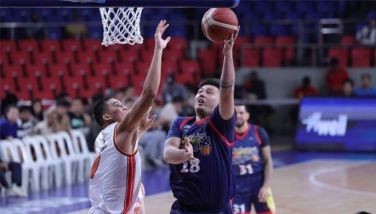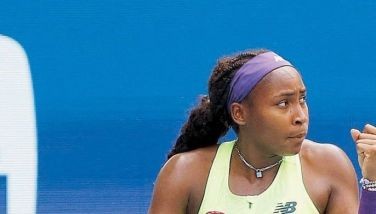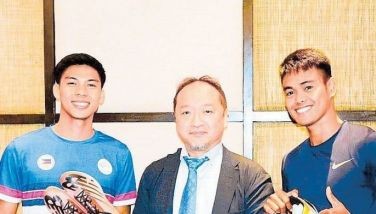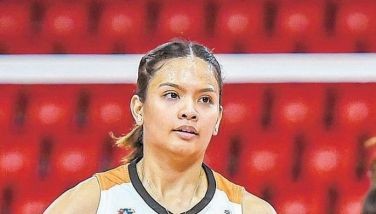Doce Pares
Last week, we featured our friend from grade school and high school days at De La Salle, athlete-engineer-mathematician-fishing enthusiast, and now 65-year old arnisador, the San Jose, California-based Valentin (Jojo) de la Fuente. Five years into arnis, also called eskrima and kali, Jojo has developed his skills in the martial art to the point where he will be competing in the World Escrima Kali Arnis Federation (WEKAF) in Cebu City from July 18-24. As a continuation of a friendship that dates back to the mid 1950’s and in recognition of our common love for sports, Jojo has asked me to be in his corner as his second. I ended my column last week with the sentence, “I will be his second” but it became, “It will be his second”, which created the impression that it was Jojo’s second world tournament.
At any rate, as in a number of sports, and especially in the context of our contentious society, various sub-groups have sprung from those who consider themselves the “original” proponents of arnis. In some cases, the sub-groups have become bigger and more active than the “originals”.
Frank Braum in his work, “Conceptual Modern Arnis” says modern arnis is the system of Filipino martial arts founded by the late Remy Presas as a self-defense system. Braum says, Presas’s goal was to create an injury-free training method as well as an effective self-defense system in order to preserve the older Arnis systems. The term Modern Arnis was used by Premy Presas’ younger brother, Ernesto, to describe his style of martial arts: since 1999, Ernesto has called his system Kombatan, which is derived principally from the traditional Presas family style of the Bolo (machete) and the stick dueling art of Balintawak Eskrima.
In recognition of the Philippine roots of Arnis (in the same way that Karate is Japanese, Taekwondo is Korean, the Philippine government declared it the Philippines’ martial art and sport when then President Gloria Arroyo signed Republic Act 9850 in 2009. The Department of Education is mandated to include Arnis as a course in Physical Education.
For his part, Jojo ended up with, “Doce Pares, a brand of eskrima that started in 1932. Jojo says that over the years, Doce Pares has built a very wide international following with branches in, among others, Hawaii, France, Australia, Germany and Indonesia. According to Jojo, Doce Pares seems to be the most popular type of arnis. It was featured in a very popular TV show called “Human Weapon”.
The show featured two professional martial artists from the USA (one of them an ex-NFL player) who went to Cebu to take up arnis and eventually fought local champion Vic Pableo (who, together with Atty Dionisio Canete is organizing the WEKAF tournament). Doce Pares is headed by Canete whose lifetime passion is to spread the sport worldwide.
The TV program showed sights and sounds of Cebu including the matches which were held in a cockfight arena. There is also, according to Jojo, a four-storey building in Cebu where people from all over the world come to eat, sleep and study arnis, 24/7.
Jojo rightfully points out that Doce Pares has been spreading Philippine culture globally through eskrima. He says that “in the early days, the only Tagalog word in the English language was “boondocks” which is “bundok” (mountain) in Tagalog. Now there are a lot more that have slowly filtered in through eskrima and it is fascinating to hear Caucasians say words such as “sigue” (go ahead; which is actually Spanish); “sayaw” (dance); “sipa” (kick) and “kahoy” (wooden stick).
Jojo works out with Master Val Pableo when the latter comes to the States to give seminars. Pableo encouraged Jojo to train hard and join international tournaments such as WEKAF in Cebu that Doce Pares is organizing with, as of now, no support from government. Jojo believes that hundreds of arnis enthusiasts will be descending in Cebu in July spending precious dollars that will certainly create substantial multiplier effects in the community. Jojo says that, in the arnis world, the winners in the Cebu tournament are recognized as the real champions.
At this point, Jojo is “getting more serious with his workout”. He says he has the approval of his Grandmaster Alfredo Bandalan and teacher Prof. Ralph Chaves who will give him special training. Bandalan is a Fil-Hawaiian who brought the Doce Pares brand of eskrima to the US. He has a sub-group known as “Bandalan Doce Pares” with different schools all over the world including Hawaii.
In the Doce Pares hierarchy, Canete is referred to as the “Supreme Grandmaster” while Chavez is second to Bandalan who has won all the championships in the States in the ‘90’s. A lot of fighting rules were crafted by Bandalan who is in a class all by himself.
- Latest
- Trending
























